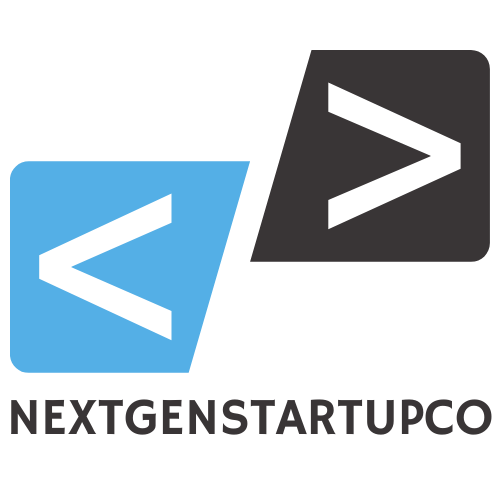In today’s digital playground, Software as a Service (SaaS) isn’t just a buzzword—it’s the lifeblood of countless businesses. But what happens when these services need to talk to each other? Enter API development, the unsung hero of the tech world. Think of APIs as the friendly bouncers at a club, making sure only the right data gets in and out while keeping everything running smoothly.
Table of Contents
ToggleOverview of SaaS API Development
SaaS API development plays a vital role in enhancing the functionalities of cloud-based software. It allows different applications to communicate seamlessly, facilitating data exchange and service integration. APIs serve as critical connectors between the SaaS platform and its users, enabling smooth operations.
Understanding the architecture of SaaS APIs is essential. Most commonly, they conform to REST or GraphQL standards. REST APIs use HTTP requests, while GraphQL provides a more flexible approach to data retrieval. Developers choose the structure based on the specific needs of their applications.
Adopting API-first development ensures the API is prioritized from the beginning. This approach enables easier updates and scalability over time. Many organizations opt for this strategy as it enhances collaboration between development teams and provides consistent experiences for end-users.
Testing APIs remains crucial during the development process. Automated testing tools allow developers to verify functionality, performance, and security. Ensuring that APIs function correctly helps prevent potential issues that could arise after deployment.
Security considerations cannot be overlooked in API development. Implementing authentication mechanisms like OAuth and API keys safeguards sensitive data. Developers must continuously monitor vulnerabilities to protect against threats.
Performance optimization enhances user experience. Techniques such as caching responses and rate limiting contribute to improved API response times. Efficiently functioning APIs keep users engaged and satisfied with the service.
SaaS API development involves establishing connections that facilitate seamless interaction between services. Its architecture, prioritization, testing, security, and performance are critical to achieving success in today’s competitive SaaS landscape.
Importance of SaaS APIs

SaaS APIs play a critical role in the functionality and integration of cloud-based solutions. They enable seamless communication between systems, thereby improving overall service delivery.
Integration with Third-Party Services
Integration with third-party services proves fundamental for SaaS applications. APIs allow businesses to connect to external platforms effortlessly. Companies can enhance their offerings by integrating payment gateways, data analytics tools, or customer relationship management systems. Using APIs facilitates a streamlined workflow, reducing the need for manual data entry. Organizations gain access to advanced functionalities without the need for extensive development. They can also quickly adapt to market changes by leveraging existing services, making API integration a strategic advantage.
Enhancing User Experience
Enhancing user experience remains a primary goal in SaaS API development. APIs provide users with faster data retrieval by ensuring efficient communication between applications. Seamless interactions lead to increased customer satisfaction, as users can access the features they need without frustration. Providing a unified interface through API integrations simplifies complex processes for end-users. Personalization options also expand, allowing services to cater to individual preferences and behaviors. Ultimately, effective API implementation contributes directly to user engagement and retention, vital metrics for any SaaS business.
Key Considerations in SaaS API Development
SaaS API development involves several critical aspects that ensure effective functionality and integration within cloud solutions.
Security and Authentication
Security remains a top priority in SaaS API development. Implementing robust authentication protocols protects user data from unauthorized access. Utilizing OAuth 2.0, for example, provides secure delegated access, crucial for third-party integrations. Additionally, adopting JSON Web Tokens ensures safe data transmission between clients and servers. Regular security audits can help identify vulnerabilities within the API. Measures such as rate limiting also protect against abusive behaviors. Establishing encryption practices for data at rest and in transit adds another layer of security. Overall, prioritizing security in API design fosters trust among users and enhances overall platform integrity.
Scalability and Performance
Scalability is essential for SaaS APIs to cope with increasing user demands. Employing microservices architecture allows independent scaling of different API components, facilitating efficient resource management. Load balancing also ensures even distribution of traffic, enhancing performance under high demand. Performance optimization techniques like caching frequently requested data can significantly decrease response times. Furthermore, implementing asynchronous processing helps improve throughput by not blocking other operations. Continuous monitoring of API performance identifies bottlenecks early. By prioritizing scalability and performance, businesses can maintain high-quality service even during peak usage, ensuring a seamless user experience.
Best Practices for Developing SaaS APIs
Effective SaaS API development requires following best practices that ensure functionality, security, and user satisfaction. Attention to design and versioning plays a crucial role in this process.
Designing RESTful APIs
RESTful APIs should promote usability and efficiency. Begin with clear and resource-oriented URLs that reflect the underlying service. Implement standard HTTP methods such as GET, POST, PUT, and DELETE to streamline operations. Use meaningful status codes to convey responses appropriately, guiding developers during integration. Prioritize consistent naming conventions for endpoints, simplifying communication between services. Additionally, include comprehensive documentation to facilitate onboarding for new developers and enhance the user experience.
Versioning Strategies
Versioning is essential for maintaining API stability. Implement a clear versioning strategy that allows developers to access previous iterations without disruption. Use URI-based versioning, such as including version numbers in the endpoint path, for straightforward management. Alternatively, consider header-based versioning for cleaner URLs. Communicate changes effectively through release notes, ensuring users understand modifications and updates. Provide a deprecation policy to minimize unexpected breakages, allowing developers to transition smoothly between versions.
SaaS API development plays a pivotal role in the success of modern business applications. By fostering seamless communication and integration between services, it enhances operational efficiency and user experience. Adopting best practices in design and versioning ensures APIs remain robust and adaptable to evolving needs.
As organizations continue to leverage cloud technologies, prioritizing API functionality, security, and performance will be crucial. Embracing an API-first approach not only streamlines workflows but also positions businesses to thrive in a competitive landscape. Ultimately, effective SaaS API development is not just an option; it’s a necessity for delivering exceptional service and driving growth.



